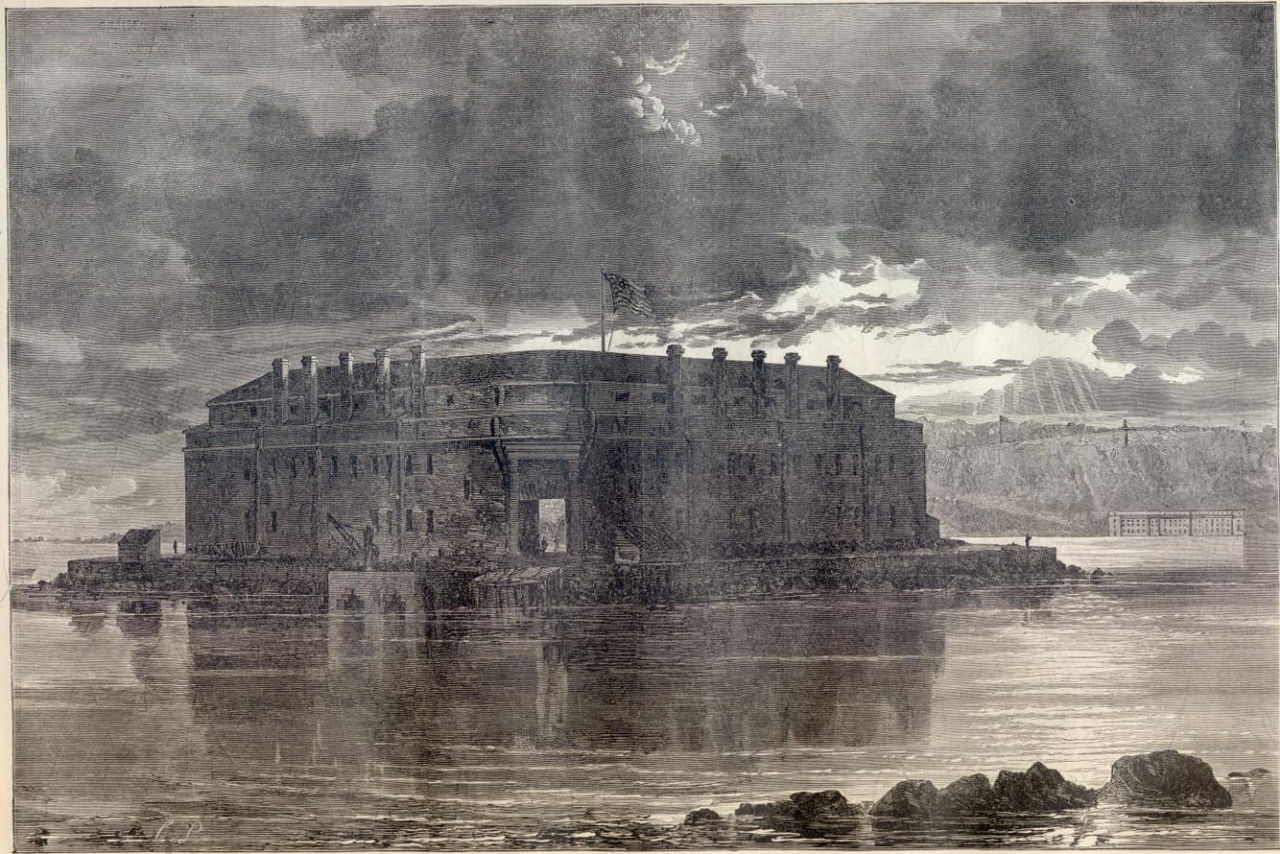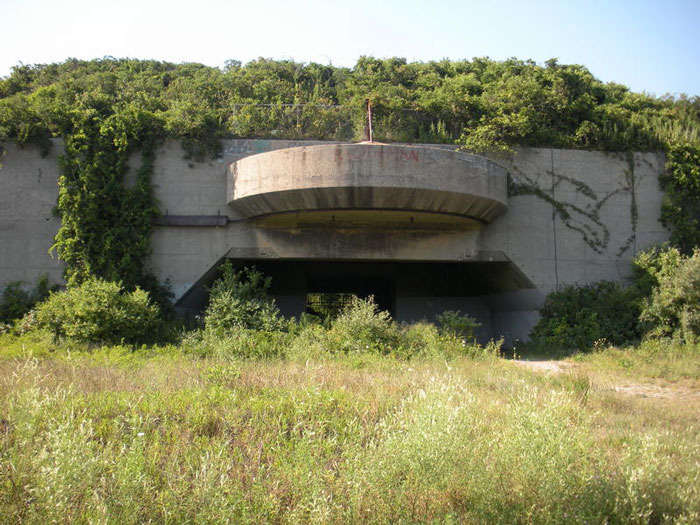Medical Tyrany Exposed
Forts and Star Forts New York USA
New York City has had more military fortifications contained within it than perhaps any other major American city. Part of this has to do with its roots in the American Revolution and the subsequent fears of a return invasion in the early 19th century.
Today’s existing forts — and those that remain in part or in ruin — make for a stark architectural contrast to the modern city. Their walls of stone and brick may conjure up a history far older than New York’s or images of a made-up fantasy world. You could pretend, for a few moments, to be a character on Game of Thrones while exploring places like Fort Wadsworth or Castle Williams on Governors Island
Here’s a list of some of the best known forts in the New York City area. Most are still around in some form. Some exist only in commemorative markers.  Others are completely gone but they leave their names as a reminder of their existence.  How many of these have you seen in person?
1 Fort Wadsworth
Location: Staten Island
Placed at a strategic site on the Narrows, Wadsworth and its associated defense buildings are perhaps the most dramatic military remains in New York City. It traces to an old Revolutionary War-era fort called Flagstaff Fort.  While it serves minor military functions to this day, Wadsworth has become a popular Staten Island attraction.
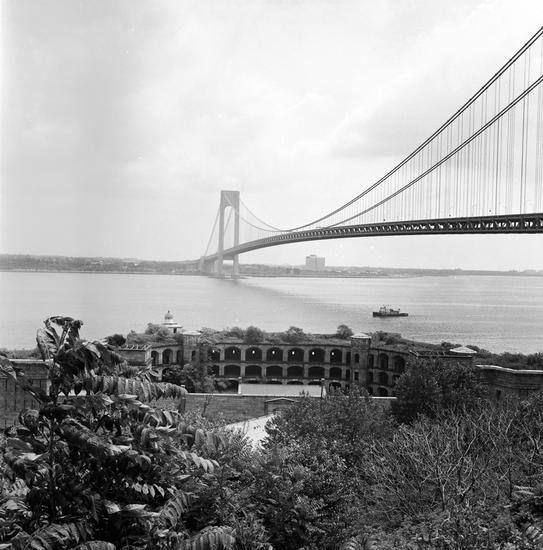
2 Fort Jay (formerly Fort Columbus)Â
Location: Governor Island
A star fort constructed from an original 1776 earthen defense. In 1806 its name was changed to Fort Columbus and changed back in the 20th century.
3 Castle Williams
Location: Governors Island
Specifically designed in 1807-1811 to defend the harbor from probable British invasion. While the British did invade America during the battles of the War of 1812, New York was spared. Today, its maintained by the National Park Service, as is Fort Jay.

4 Fort Gibson (or Crown Fort)
Location: Ellis Island
Built by the Army in 1795 and greatly upgraded in 1809 as part of the beefing up of harbor defenses. It was dismantled by the 1860s although the island was used to hold naval munitions for decades before its transformation into Ellis Island Immigration Station.  Today you can find exposed ruins outside the main building.

5 Fort Wood
Location: Liberty Island
This too was completed during the 1810s and was later named for Eleazer Derby Wood, an officer killed at a battle at the Battle of Lake Erie in 1814. Today the Statue of Liberty and her pedestal are affixed atop of the old fort. You can see a trace of the original brickwork on an exposed wall near the exit.

6 Castle Clinton
Location: Manhattan (Battery Park)
Lower Manhattan was formerly guarded by Fort Amsterdam/Fort George, but that had been dismantled in 1790. (It stood where the Alexander Hamilton U.S. Custom House is today.) Castle Clinton — named for Governor DeWitt Clinton — was built in 1808-1811 to protect lower Manhattan.  It was originally set into the water and connected with a footbridge.  After stints as the performance hall Castle Garden, New York’s pre-Ellis Island immigration station and New  York Aquarium, it sits today as a national monument in its own right.

7 Fort Gansevoort
Location: Manhattan (Meat-Packing District)
Also called the White Fort, this forgotten redoubt once flanked the western waterfront, built at the same time as the harbor forts. It was named for General Peter Gansevoort (the grandfather of Herman Melville) and stood here until the 1850s. Nothing remains of this fort today but its name, found on the street which cuts through that area — Gansevoort Street.

8 Blockhouse No. 1
Location: Manhattan (Central Park)
This curious little structure stands on the northern end of Central Park, a fortification almost two hundred years old.  Its the oldest structure contained within Central Park (although obviously Cleopatra’s Needle, which was moved here, is much, much older.)
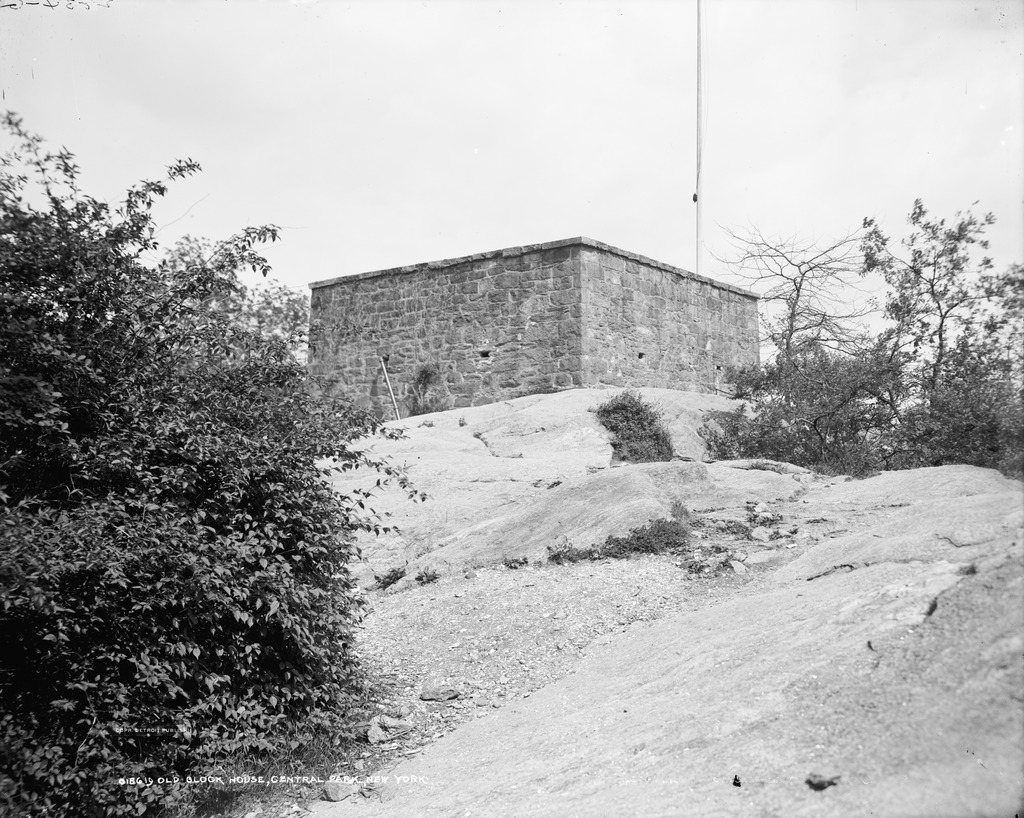
9 Fort Washington
Location: Manhattan (Washington Heights)
This fort predates most of the rest, built as a companion for Fort Lee on the New Jersey side. It was here that the Battle of Washington Heights was fought on November 16, 1776, and the fort was captured by the British. While this particular fort is no longer there, some stone walls and a plaque mark its former location. Fort Washington Avenue also pays tribute.
10 Fort Tryon
Location: Washington Heights
This was actually a northern redoubt that was an extension of Fort Washington. When the British took it over, they renamed it for William Tryon, New York’s last British governor. For some reason, the name just stuck! Its location in preserved in the breathtaking Fort Tryon Park, completed in 1935 and designed by the son of Frederick Law Olmsted.
11 Fort Sterling
Location: Brooklyn (Brooklyn Heights)
This fort, tracing to the Revolutionary Era, is unique it that it was almost immediately dismantled once the British left.  There was another fort nearby called Fort Brooklyn that lasted a bit longer,demolished by the 1820s to allow for the growth of Brooklyn’s first wealthy neighborhood. Today, near the Brooklyn Heights Promenade, stands small Fort Sterling Park, with a plaque and a flagpole commemorating the location of this critical defense.
12Â Cobble Hill Fort
Location: Brooklyn (Cobble Hill neighborhood)
This unusual corkscrew shaped fort — which we talked about in one of our previous ghost story podcasts — is notable for receiving George Washington as he observed his troops during the Battle of Long Island in 1776. Â A handsome plaque on the old bank-turned-Trader-Joe’s at Atlantic Avenue and Court Street marks the location of this forgotten fortification.

13 Fort Greene
Location: Brooklyn (Fort Greene neighborhood)
There really was a fort here in the area of Fort Greene Park today, on the highest point of the hill, a traditional five-point fortification similar to that on Governors Island. In the 1840s it was torn down to construct one of Brooklyn’s oldest parks — called Washington Park. Oddly enough, the original fort here was called Fort Putnam. There was a Fort Greene (named for Nathaniel Greene) but it was in another area of Brooklyn, closer to today’s area of Boerum Hill.

14 Fort Hamilton
Location: Brooklyn (Bay Ridge)
This is the last active military headquarters in the New York City area. Built in the late 1820s-30s, it was named for Alexander Hamilton who was an officer in the Revolutionary War. Although an active site, you can visit the Harbor Defense Museum which is housed here.

15 Fort Lafayette
Location: Off the coast of Brooklyn (Bay Ridge)
This imposing island fort was built in the 1810s and named for the Marquis De Lafayette. Like many of New York’s forts, it held Confederate and enemy prisoners during the Civil War. The fort was later dismantled for the construction of the Verrazano-Narrows Bridge. You can see where it would have stood as the bridge’s Brooklyn-side tower stands on the location today.
16 Fort Tilden
Location: Brooklyn (Rockaway Beach)
While defenses of various kinds have sat out on Rockaway Beach since the early 19th century, Fort Tilden was fully built up during World War I, named for Samuel J. Tilden. Today its ruins peering through overgrowth can be found near the beach as part of the Gateway National Recreation Area.
17 Fort Schuyler
Location: Bronx
Completed in the 1850s, this unique fortification protected New York for any possible attack from enemies approaching along the Long Island Sound. Abandoned for strictly military use in the 1920s, today it houses the State University of New York Maritime College and a maritime museum.

18 Fort Totten
Location: Queens
This fortification traces to worries relating to the Civil War. It was constructed in 1862 to protect the East River with its companion across the water Fort Schuyler.  You can still visit Fort Totten today as the area has been opened up as a public park with regular tours of the old buildings.
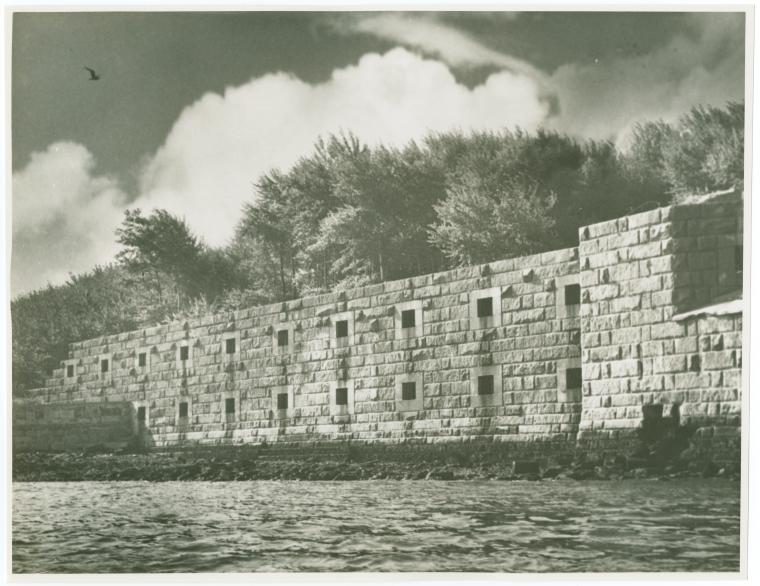
At top: Fort Lafayette in a painting by Thomas Hicks (1861)
Native American History in Canada
The Saugeen Ojibway Nation Territory (Ojibwe: Saukiing Anishnaabekiing), also known as Saugeen Ojibway Nation, SON and the Chippewas of Saugeen Ojibway Territory, is the name applied to Chippewas of Nawash Unceded First Nation and Saugeen First Nation as a collective, represented by a joint council. The collective First Nations are Ojibway (Anishinaabe) peoples located on the eastern shores of Lake Huron on the Bruce Peninsula in Ontario, Canada. Though predominantly Ojibway, due to large influx of refugees from the south and west after the War of 1812, the descendants of the Chippewas of Saugeen Ojibway Territory also have ancestry traced to Odawa and Potawatomi peoples.
Consequently, though only two First Nation governments are successors apparent, there are seven different First Nation communities who lived, fished, hunted and traded in Saugeen Ojibway Territory. The story of each of their communities from past to present realities are best told by their own people. Oral tradition carries those stories and their descendants are still alive.
Origins
At one time, both by oral history and archaeological evidence, all of the modern Bruce Peninsula (or the "Saugeen Peninsula" as referred by the Ojibway) was home to the Chippewas of Saugeen Ojibway Territory. From time immemorial, hunting and fishing were plentiful in this area. Archaeologist are able to find artifacts from Early Woodland Period (1000 BCE to 1000 CE) calling the culture that left artifacts in the Saugeen Ojibway Territory as the Saugeen Culture. Other than pottery, the projectile points called Saugeen Point are typical characteristics of the Saugeen culture. Consequently, associated with both the Chippewas of Saugeen Ojibway Territory and the Saugeen Culture peoples were winter camps around Owen Sound, Cape Croker and the Collingwood area, as well as summer camps in Walkerton, Wiarton, Goderich, Tobermory and Red Bay. Traditional territory also included all of the Saugeen River watershed. Thus, places such as Tobermory, Meaford, Goderich, Cape Croker, Owen Sound and Orangeville are located in the traditional Saugeen Ojibway Nation Territory. The permanent settlement at the outlet of the Saugeen River which lent its name to the region and its people was called Zaagiing, meaning "at the river's outlet," i.e. "at the mouth of the river.[1]
The Chippewas of Saugeen Ojibway Territory are a member of the Council of Three Fires of the Ojibway, Odawa and Potawatomi Nations. The Confederacy came to help in the Battle of Skull Mound and in the Battle of Blue Mountain. Though the Council of Three Fires often fought against the Iroquois Confederacy (or the Naadowe as they are called in the Anishinaabe language), the Chippewas of Saugeen Ojibway Territory peacefully shared the territory with the Wyandotte/Wendat Nation who also made the area their home. The Ojibway Nation called the Wendat peoples Nii'inaa-Naadowe ("The 'Nadowe' within our homeland"), but the French referred to them as "Huron" and lent their name to the Lake.
People from many nations moved into Saugeen Ojibway Territory after the War of 1812. They came from Ohio and from the State of New York. As a result of the American Indian Removal Policies of the 1830s more people came from Michigan and Wisconsin. Some were on their way to the Manitoulin Island project. Some moved from Coldwater on the Narrows. Others came from the Toronto and Niagara regions after European and Loyalist newcomers affected their territory. Due to these influxes of people from other areas, the history of the original Chippewas of Saugeen Ojibway Territory is often confused with that of other Anishinaabeg who settled in Saugeen Ojibway Territory after the American Revolution. In addition, often confused together are the histories of those Anishinaabeg who settled in Cape Croker in 1854 with the history of the original Chippewas of Saugeen Ojibway Territory.
Treaties
One of the earliest documents recognizing Nation to Nation relations between the Crown and Indigenous peoples, the Royal Proclamation of 1763 stated "Indian land" could only be sold to the Crown. However, the document did not differentiate between those who were the original resident of the land cession in question and those who settled as part of the refugee migration, which has caused long-held animosity among the Anishinaabe communities located in the Saugeen Ojibway Territory.
In the Saugeen Surrenders, due to development pressures of the European Canadians, mainly in the form of farming, the Saugeen and Owen Sound Indian Reserve was ceded to The Crown. However, five smaller areas were reserved for the Chippewas of the Saugeen Ojibway Territory.
The major Successor Inherent to the original people of the Chippewas of Saugeen Ojibway Territory is that of the Saugeen First Nation, as told in the stories of the community that is known as Chippewa Hill. Today, the Saugeen First Nation includes the people living in the communities of Chippewa Hill, Scotch Settlement, French Bay and Chief's Point.
Although there are shared histories, contemporary history of the Chippewas of Nawash Unceded First Nation have a separate story from that of the Saugeen First Nation.
https://en.m.wikipedia.org/wiki/Saugeen_Ojibway_Nation_Territory
Canada Marches
Good Day to the Canada Marches community on Day 90!
As previously highlighted, here is a quick newsletter update with some handy dandy quick links to get you to the places you want to read about!
- First off, the main website which is our go-to (www.canadamarches.ca)
- It serves as a great time to remind community members of the Canada Marches Code of Conduct as its paramount that this community abides by these set outlines, especially if you are thinking of stepping up to be a volunteer on the team (https://www.canadamarches.ca/code-of-conduct)
- Next, GPS live tracker (https://www.canadamarches.ca/route-updates)
- A very popular hangout is the Image Gallery featuring a great roundup of Logan Murphy Photos! (https://www.canadamarches.ca/gallery)
- The Video Gallery has also gotten a facelift and will continue to be added to as videos are made ( https://www.canadamarches.ca/video-gallery)
Next up is the Support Items, which is where we need your help! As the timeline gets closer to the destination of Ottawa, we need the Members of Parliament to know that it’s not just James and his team that are requesting a meeting, but it’s also important to the citizens of Canada. Here is the MP Letter link where you can pick which format works best for you and then copy/paste and change it or add to it so it’s personalized from you. (https://www.canadamarches.ca/mp-letter)
You do not have to write to each MP as James has done but you can write to YOUR MP!
(Find your MP here: https://www.ourcommons.ca/Members/en/search)
We’d also like to announce a NEW feature coming soon on the Canada Marches website… E-petitions!!!
What is that, you ask? Well, it’s a newer FASTER way to get the attention of the House of Commons and the Canadian Government. This new tool will be able to keep better track of how many citizens support “Canada Marches-James Topp” and his mission. Once this is launched we will let you know how easy it will be to get to it and add your name to the e-petition in support of Canada Marches-James Topp!
As well, the team is still busy creating new content for you plus some other ideas on ways to support…so stay tuned and watch your inbox for more “Newsletter” items!
That’s it for now folks, until next week!
Pandemic Stories and Actions
https://action4canada.com/wp-content/uploads/Application-Record-VLC-S-S217586.pdf
https://action4canada.com/legal-action/
all about political gain
Apps to Track "Green" Social Credit Scores
China Ecommerce Giant Unveils Apps to Track "Green" Social Credit Scores to Monitor All Aspects of Your Life at World Economic Forum
At the World Economic Forum in Davos, Switzerland , Alibaba Holdings President J. Michael Evans unveiled their plans to launch an app that could track an individual user's "carbon footprint." "We’re developing, through technology, an ability for consumers to measure their own carbon footprint.
What does that mean? That’s where are they travelling, how are they travelling, what are they eating, what are they consuming on our platform. So: An individual carbon footprint tracker." As Kit Knightly reports at Off-Guardian, this is HUGE news as Alibaba is the second largest ecommerce company in the world, second only to Amazon.com, with revenues in excess of 715 billion Yuan in 2021 (that’s over 110 billion USD).






